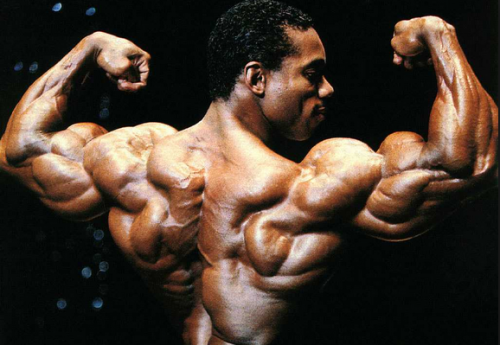By Jesse Burdick
Who’s the best personal trainer or strength coach in the world?
I’m hoping that’s me, but if it’s not, I really have no idea. The reason why I don’t know is because the best trainers and coaches in this business are extremely busy, and nobody’s ever heard of most of them. They’re buried up to their necks in work. They turn on the lights in the gym when they get there because they’re the first to arrive, and they turn them off when they leave, because they’re the last ones out. Their work doesn’t leave them time for much of anything except for eating and, hopefully, working out—because, of course, it helps if you look the part.
How do you know when your personal trainer or online fitness “guru” sucks?
That’s easy. The guys who suck aren’t anything like the guys and girls I just told you about. Trainers who suck are constantly telling you how awesome they are. They’re all over Facebook and Twitter, posting back-to-back-to-back, all day long, about themselves. You know what this means? It means they’re not in the gym, and they’re not putting in the work. They’re the ones you don’t want to listen to.
Informational Overload
Legendary strength coach Buddy Morris and legendary powerlifter Paul Childress used to coach together at the University of Buffalo. Paul’s desk was always clean, without anything cluttering it. Buddy’s desk was a mess, blanketed with every magazine in existence, including one that covered yoga. Seeing this, Paul asked Buddy, “What the hell are you reading that for? What’s in it?”
“I don’t know,” Buddy replied, “but there could be the secret to everything.”
The best trainers and coaches in the world are humble. They don’t think they know it all, so they rabidly seek out information, trying to soak up as much as they can, as fast as they can. They’ll read anything and everything, whether it applies to their discipline or not, because there could be something useful to be pulled from it and used.
 As Louie Simmons once asked, “If I put a million dollars under a rock in a rock garden, how many stones are you going to turn over?” This is the whole point if you’re a trainer or a coach. You can’t leave any stones unturned. Instead, you have to turn over a whole shitload of rocks to find your secrets and develop your own way of doing things. And there are no rocks on the internet. Constantly praising yourself and telling the online world how great you are? Nobody should do that. Your clients should be the ones doing that for you—and if they’re not, you might want to consider a new profession and get the fuck out of ours.
As Louie Simmons once asked, “If I put a million dollars under a rock in a rock garden, how many stones are you going to turn over?” This is the whole point if you’re a trainer or a coach. You can’t leave any stones unturned. Instead, you have to turn over a whole shitload of rocks to find your secrets and develop your own way of doing things. And there are no rocks on the internet. Constantly praising yourself and telling the online world how great you are? Nobody should do that. Your clients should be the ones doing that for you—and if they’re not, you might want to consider a new profession and get the fuck out of ours.
The Internet Training Trap
Here’s what you need to watch out for: Websites with flashy advertising and articles that are far more advertorial than they are informational. This sounds obvious, but it may not be at first. The surefire tipoff here is when you see multiple sales links on a page, where they’re asking you to click all over the place. They’re hoping you’ll click on something and buy it, because they’re getting a cut. This is affiliate marketing, and although people have every right to make as much money as they can, you have to wonder how much time they’re actually devoting to the content and information they’re delivering in the process.
Internet “gurus’ bother the shit out of me. When you see the same four people say the same things about every fourth person in their circle, you know you’re being lied to. There are scores of so-called “trainers” out there who try to blow themselves up online, attract useless traffic, and make themselves artificially popular with their mailing lists. Meanwhile, their information is a joke.
These guys will tell you, over and over, how awesome they are, and then they’ll get their three friends to tell you how awesome they are—and then they’ll put out a subpar, poorly-conceived eBook and have those same three friends tell you what a great product it is. Meanwhile, none of them have even read the thing. Is it really a quality product? Who knows? Probably not, especially if it’s marketed this way.
What you want to look for online is someone who’s made real changes—either personally or with clients, in terms of sports performance or body composition—and is willing to speak freely about it without pestering you with all sorts of bullshit first. Kiefer is selling some products here—Carb Back-Loading and The Carb Nite Solution—but he’s not part of this crowd because his products actually work, and because he’s not bombarding you with shit all day long.
Why? Because word of mouth is still the best way to find the best people out there. Sometimes, if they’re as busy as they should be, these people won’t have time to deal with you—so you’ll either have to wait until they’re free to talk to you, or they’ll refer you to someone else. These are good signs, not bad ones. As for this self-proclaimed brigade of internet awesomeness? Well, those people don’t train anyone, they’re miles from awesome, and they’ve never made anyone else awesome in their lives—and wouldn’t know how if you paid them.
The One-Trick Ponies
 I’m deathly afraid of people who specialize in just one thing. If you ask me to go see someone who’ll have me working only with kettlebells for an hour, I’ll have to decline your offer—and I won’t be polite about it. The same goes for conditioning and bodybuilding, too. Unless you’re training for those specific things—a kettlebell competition, for example—you’re being lied to. Again.
I’m deathly afraid of people who specialize in just one thing. If you ask me to go see someone who’ll have me working only with kettlebells for an hour, I’ll have to decline your offer—and I won’t be polite about it. The same goes for conditioning and bodybuilding, too. Unless you’re training for those specific things—a kettlebell competition, for example—you’re being lied to. Again.
Every good trainer or coach knows how to use all of his or her tools, because again, the idea is to look under all of those rocks to find those secrets. It doesn’t matter whether this is for yourself, for just one client, or for everyone you train. There are pieces of machinery in my gym that I use, literally, for just one person. This may not make economic sense to some people in terms of efficient use of space, but it’s worth it. Those clients, when they see results, will keep coming back, and they’ll stay with me forever.
The point? Diversify and use everything.
The Best Laid Plans
Another Buddy Morris quote I love goes something like this: “The best thing about this industry is that everything works, but the problem with this industry is that everything works.” This means that there’s no best way to train everyone, so you have to find out what works, how long it’ll work, and how long you have to break free from that thing before it’ll work again.
Your trainer needs to understand the system he’s trying to use. He needs to understand how the various energy systems work, and he needs to know how to read his clients. Whether you’ve seen a client do a million reps, or you have an Omegawave system or BioForce HRV, you need to know what’s going on with your clients as soon as they walk in the door.
Mike Tyson’s famous quote applies here: “Everyone’s got a plan until they get punched in the face.” As a trainer, you can develop the perfect workout system—one that’s periodized perfectly for your client—but guess what? One day, they’re going to walk in and tell you their father died. They need you, but their cortisol is through the roof, they haven’t slept in three days, they haven’t eaten, and they have to give a speech at the wake and can’t stop crying.
Do you seriously think you’re going to have them work up to 80 percent for a 5×5 today? No, you’re not. Your trainer needs to have the ability to work around this—to move on and use his or her tools properly in order to get you what you need, and to give you just enough to help you, not crush you.
Who Trains the Trainers?
Finding a real trainer—and not some internet guru-type—is an interview process. Sit down with them and see what they do. If they’re immediately trying to sell you training packages without explaining what they actually do in practice—or they’re convoluting the process with all sorts of “functional” bullshit—you need to run away. Fast. The idea here is to find someone who’s down to earth and willing to help you—not someone who’s going to make you step over a piece of PVC pipe and insist that it can tell him how many times you farted last week.
You want a trainer or coach here, not a cheerleader—and you can tell which direction they swing simply by watching. If a trainer is simply standing by while their clients look like baby giraffes, and not offering any coaching cues after a set is over, I have a big problem with that approach. If you’re ever trained like this, don’t go back.
 As a trainer, you have to let people go through their motions—provided they’re safe, of course—and then correct them afterward. Correcting a client midway through a movement never works, because they won’t be able to adjust the way you want them to. When a set ends, you want your trainer to explain, via simple cues, what you should do the next time around.
As a trainer, you have to let people go through their motions—provided they’re safe, of course—and then correct them afterward. Correcting a client midway through a movement never works, because they won’t be able to adjust the way you want them to. When a set ends, you want your trainer to explain, via simple cues, what you should do the next time around.
I suppose the best way to refer to this is that I want trainers to be focused. Everything with clients needs to be individualized, and trainers need to focus on their clients, and not on their iPhones or their sales pitch. If you’re training in a group where seventeen people are doing the same set of moves while your trainer struts around on his phone, you might want to rethink your strategy and spend your money elsewhere.
The Infomercial Explosion
I’m sure you’re expecting me to blast all those programs we see at two in the morning telling us we’re going to look fit and lean in 90 days without leaving the house, but I’m not. I’ll simply tell you that you get what you pay for, and that’s all there is to it. If you want an “all-inclusive” system for a hundred bucks, that’s what you’re going to get: $100 worth of knowledge. With that said, I applaud these people for trying. My hope is that programs like P90X and Insanity can act as gateway drugs, leading people into real strength and conditioning like the kind you’ll find here.
I broke into this field because I was a moron when I was an athlete. I thought I knew everything, I didn’t listen to my strength coach, and I ended up getting hurt. Repeatedly. I overtrained so hard that I contracted mononucleosis, and then I tried to overtrain myself back to health and landed in the hospital multiple times. I eventually said, “Shit, man. I’m doing everything wrong here. Let’s fix this.” When that happens to you, you read, you talk to people, and you find ways to do things better and not have health problems.
I don’t want P90X or Insanity to hurt people, and I’m not claiming they do. What I am saying is that I hope people start to see something good when they try these programs, and that it whets their appetite to start looking for the really good stuff—eventually navigating through all the flashing lights and marketing scams to find someone who can really help.
Real Talk, Bro
The job of a trainer or coach is to make you better—not necessarily a better athlete, but a better person. The trainer who touches the most people in a positive way is the one who wins in the end—not the one who has the biggest bank account or the flashiest website. If you’re good enough and you love what you do, the former will find you anyway. That’s because this whole business is about influencing people. The more influence you have, and the more passionate you are, the better you’re going to be at training and coaching. You want to create passion, not hype.
Look at it this way: A real coach is someone who produces someone who’s better than he or she is. If you’re standing at the top of the mountain, dictating everything to everyone else, you’re not a good coach. If you create someone who surpasses you, you’ve done your job. Remember, a real master is one who’s eventually killed by his prodigy.
Push-Pull Upper Body Awesomeness
Try this if you want to get jacked, tan, and fucking awesome:
Push Press: 60% x 3 x 15 (sets on the minute, with 2 pull-ups after every set)
Push-ups: 100, in as few sets as possible
Lat Pulldowns: 100 reps
Mini-Band Pull-Aparts: 100 reps
Dumbbell Hammer Curls: 100 reps








Recent Comments